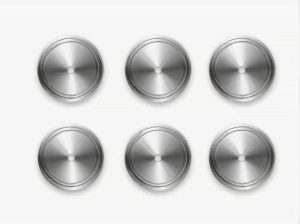In chemical kinetics, the order of a reaction and its molecularity are important concepts used to describe how reactions proceed at the molecular level. For elementary reactions, these two terms are identical, meaning the order of the reaction is equal to its molecularity. This content explains the relationship between order and molecularity, their definitions, and why they are the same for elementary reactions.
Understanding Elementary Reactions
A chemical reaction occurs when reactant molecules collide and transform into products. Some reactions occur in multiple steps, while others occur in a single step.
What is an Elementary Reaction?
An elementary reaction is a reaction that takes place in a single step, meaning the reactants convert directly into products without intermediates. Since there is no complex mechanism involved, the reaction follows a straightforward relationship between reactants and the reaction rate.
Examples of Elementary Reactions
-
Unimolecular Reaction:
-
Example: Decomposition of ozone (O3) into oxygen
O_3 rightarrow O_2 + O -
This reaction involves a single molecule breaking down, so it is unimolecular.
-
-
Bimolecular Reaction:
-
Example: Reaction of nitrogen dioxide with carbon monoxide
NO_2 + CO rightarrow NO + CO_2 -
This reaction involves two molecules colliding, so it is bimolecular.
-
-
Termolecular Reaction:
-
Example: Formation of ozone from oxygen atoms
O + O_2 + M rightarrow O_3 + M -
This reaction involves three molecules colliding, so it is termolecular.
-
Since elementary reactions occur in a single step, their rate laws can be derived directly from their molecular interactions.
Definition of Molecularity
What is Molecularity?
Molecularity refers to the number of reactant molecules that collide in a single step of a reaction to form products. It is always a whole number because it represents how many molecules participate in the reaction at the same time.
Types of Molecularity
-
Unimolecular Reaction (Molecularity = 1)
- A single molecule reacts or decomposes.
- Example:
A rightarrow B + C
-
Bimolecular Reaction (Molecularity = 2)
- Two molecules collide to form products.
- Example:
A + B rightarrow C
-
Termolecular Reaction (Molecularity = 3)
- Three molecules collide simultaneously (rare).
- Example:
A + B + C rightarrow D
Molecularity cannot be zero, negative, or fractional because it is based on physical collisions between whole molecules.
Definition of Reaction Order
What is Reaction Order?
Reaction order refers to the exponent of the concentration of reactants in the rate equation. It describes how the reaction rate depends on the concentration of reactants.
Rate Law for a General Reaction
For a reaction:
The rate law is written as:
where:
- k is the rate constant,
- [A] and [B] are the concentrations of reactants,
- m and n are the reaction orders with respect to A and B,
- Overall order = m + n.
The reaction order is determined experimentally for complex reactions but can be derived directly from stoichiometry for elementary reactions.
Why Are Order and Molecularity the Same for Elementary Reactions?
In an elementary reaction, the reaction occurs in a single step, meaning there is a direct relationship between reactants and rate. Since the reaction occurs exactly as written, the rate law can be determined from the stoichiometry of the reactants.
Example 1: Unimolecular Elementary Reaction
- Molecularity: 1 (one molecule of A is involved).
- Rate Law: text{Rate} = k[A]^1 .
- Reaction Order: 1.
Since the exponent in the rate law matches the molecularity, order = molecularity.
Example 2: Bimolecular Elementary Reaction
- Molecularity: 2 (two molecules react).
- Rate Law: text{Rate} = k[A]^1[B]^1 .
- Overall Order: 1 + 1 = 2.
Again, the reaction order is the same as the molecularity.
Example 3: Termolecular Elementary Reaction
- Molecularity: 3.
- Rate Law: text{Rate} = k[A]^1[B]^1[C]^1 .
- Overall Order: 3.
This confirms that for elementary reactions, reaction order equals molecularity.
Why Are Order and Molecularity Different for Complex Reactions?
For complex (non-elementary) reactions, the overall reaction consists of multiple steps, often involving intermediates. In such cases:
- The slowest step (rate-determining step) controls the reaction rate.
- The rate law does not always match the overall balanced equation.
- Reaction order must be determined experimentally.
Example: Decomposition of Hydrogen Peroxide (H2O2)
Expected molecularity: 2 (since two H2O2 molecules react).
Experimental rate law:
The actual order is 1, not 2, because the reaction proceeds through a two-step mechanism, making molecularity and order different.
Key Takeaways
? For elementary reactions, order and molecularity are always the same because the reaction occurs in a single step.
? Molecularity is determined by the number of reactants involved in the step and is always a whole number.
? Reaction order in elementary reactions is directly derived from reactant coefficients.
? In complex reactions, order and molecularity can be different because the reaction proceeds in multiple steps, requiring experimental determination of the rate law.
Understanding this relationship is essential in chemical kinetics, as it helps predict reaction rates and mechanisms in various chemical and industrial processes.



